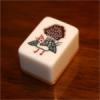I've been with Unity for a while now, and I've tried out UDK.
Honestly, as a beginner, I think you'll have a much easier time with Unity, and the price to pay is very little.
Unity does lack some graphical capabilities that UDK has, but Unity is overall much more innovative when it comes to the user interface. Very easy to use once you grasp it, and grasping it isn't very hard. Unity 4 is coming out with some pretty good looking features as well, including rendering and graphics boosts. I think the graphics difference between Unity and UDK will be mostly insignificant soon enough, as Unity improves.
UDK doesn't seem to have any detailed and straight-to-the-point documentation on how to make a game. I think it was made more specifically for mods, not just making games. Even with hours of searching and playing around with it, I couldn't figure out how to do some very simple things, like making a simple 'player' that can move with WASD. I could do that in 2 minutes with Unity, clean and easy, but UDK seems to insist on making me inherit from pre-made classes in a maze of not-very-explanatory documentation and web searches. For a programmer, this is kind of like a slap in the face; I want to program my game my own way.
Unity also has the capability of targeting multiple platforms, including Android, iPhone, XBox360, PS3, and Wii. Unity 4 is introducing quite a few exciting new things, including building for Linux and Adobe Flash Player, and as previously mentioned, graphics and rendering updates.
So I'm of the opinion that Unity is better for making games, not mods. Unity has great organization of your scripts and assets, very easy and straight-to-the-point user interface, and lots of very helpful and nice people in the community (I'm not saying the UDK community is rude). Also, it supports scripting with C# and its own, easy-to-use UnityScript language.
Though my experience with UDK is limited, I have many reasons to say Unity is a very good engine, and I think you'll have a much easier time getting into Unity than you would UDK. I'd take it over UDK any day, because it just seems much more innovative, and there are lots of exciting things going on in the Unity community.
Hopefully I don't sound like a "Unity fanboy" because of this. Just wanted to offer my personal experience with the two engines.








